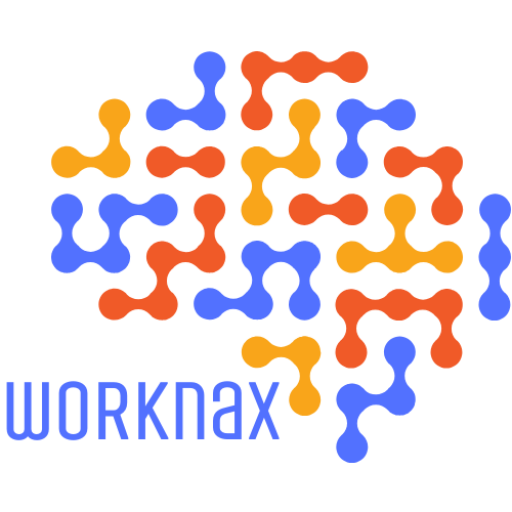Anúncios
The transition to hybrid learning has emerged as a significant trend in education, fundamentally transforming the landscape of how students engage with their studies. Hybrid learning, which blends traditional in-person instruction with online components, has gained unprecedented momentum as schools and universities strive to adapt to the challenges posed by the ongoing pandemic. This innovative approach to education is not only fostering flexibility but also catering to diverse learning styles, making it an increasingly attractive option for a wide array of learners.
In recent months, educators and administrators have begun to recognize the immense potential of hybrid models to effectively address the unique needs of students. By allowing a portion of students to attend classes physically while others participate online, schools can manage classroom sizes more effectively. This crucial flexibility helps maintain social distancing requirements and ensures that educational institutions can continue to provide high-quality education, irrespective of changing public health guidelines that may arise.
One of the essential components of successful hybrid learning lies in the seamless integration of technology. Schools and educators must invest in reliable digital tools and platforms that can significantly enhance the learning experience for both students and teachers alike. Effective communication systems and robust learning management software are vital, as they make it considerably easier for teachers to deliver content and engage meaningfully with students, whether they are participating in-person or remotely from home. As technology continues to evolve rapidly, educators are tasked with staying informed about the best tools available to meet an increasingly diverse range of students’ needs.
Moreover, teacher training plays an absolutely pivotal role in the overall effectiveness of hybrid learning environments. Educators must be thoroughly equipped with the essential skills needed to facilitate both in-person and online learning effectively. This includes acquiring a strong understanding of how to utilize technology for interactive lessons, develop engaging digital content, and assess student performance through a variety of formats. Continuous professional development opportunities can empower teachers and help them thrive within this new educational landscape, enhancing the overall learning experience for their students.
Parents also play a significant role in the success of hybrid learning models. Their involvement is crucial in helping to bridge the gap that often exists between school and home, ensuring that students remain engaged and motivated throughout their educational journey. Open lines of communication between parents and educators are essential for monitoring student progress and addressing any concerns that may arise. By fostering an environment of collaboration, schools can effectively support families in navigating the diverse challenges associated with hybrid education.
One of the most notable benefits of hybrid learning is its unique potential to personalize education for individual students. This model offers educators the flexibility to tailor lessons to meet specific learning needs and paces, accommodating everything from students who require additional support to those who excel and can advance more quickly. By offering a varied approach to learning, schools can significantly foster greater student achievement, satisfaction, and overall engagement in their studies.
Another important aspect to consider is the opportunity that hybrid learning provides for building self-directed learning skills among students. In a hybrid model, students often have increased control over when and how they engage with course material, instilling a sense of ownership and responsibility for their own learning journey. This autonomy encourages the development of critical skills such as time management and self-regulation, and by promoting such independence, hybrid learning can effectively prepare students for future academic challenges as well as professional demands.
Despite the numerous advantages offered by hybrid learning, there are still various challenges associated with these models that must be taken into account. Not all students have equal access to technology, which can create significant disparities in educational opportunities. Schools must work diligently to provide necessary resources such as devices and internet access to ensure that all students can participate fully in their schooling, whether in-person or online. Addressing these equity issues is crucial for ensuring the long-term success and sustainability of hybrid education initiatives.
Engagement is another area that presents significant challenges in a hybrid learning environment. Teachers may struggle to successfully maintain the same level of interaction and connection with students, regardless of whether they are in the classroom or participating remotely. Therefore, innovative teaching strategies have become essential for keeping students engaged, motivated, and promoting active learning. Incorporating a wide array of interactive elements, such as polls, discussions, and group activities, can help to bridge the gap between online and in-person learning experiences, facilitating more cohesive learning outcomes.
Social interactions represent yet another critical component of students’ overall development, which hybrid models may inadvertently limit. These programs might constrain the opportunities for spontaneous interactions that typically occur in traditional classrooms. Schools, along with educators, must be particularly intentional about creating opportunities for socialization, whether in-person or online. Group projects and virtual meetups, for instance, can effectively foster a sense of community while helping to cultivate meaningful relationships among students, even when they are not physically present in the same space.
Assessment methods also require careful consideration in hybrid learning environments. Traditional testing may not accurately reflect students’ understanding or engagement, particularly when their learning experiences vary so significantly. Educators should explore diverse and innovative assessment options, which may include project-based learning, portfolios, and self-assessments. These alternative assessment approaches can provide a more comprehensive view of student performance and learning outcomes, thereby fostering a deeper understanding of individual student progress.
Another increasingly relevant topic within hybrid education is the need for mental health support for students. The pandemic has significantly highlighted the importance of prioritizing mental well-being within educational systems. Schools must consider how to provide adequate mental health resources to effectively support students as they navigate the stressors associated with hybrid learning. Integrating wellness programs, ensuring access to counselors, and promoting mindfulness practices can all contribute to fostering resilience in students as they adapt to new and complex learning environments.
As hybrid education continues to evolve, ongoing research becomes essential to identify best practices that can maximize its effectiveness. Collaborative efforts among educators, researchers, and policymakers are crucial for helping to shape the future of hybrid learning. By sharing insights and carefully analyzing data on student performance, schools will be able to develop more effective hybrid models that not only cater to students’ unique needs but also meet essential educational standards and requirements.
The overall success of hybrid learning will largely depend on the level of organizational support present within school systems. School leaders must prioritize the implementation of structures that promote collaboration, effective communication, and professional growth among educators. Investing in technology infrastructure, teacher training, and mental health resources will serve to reinforce the hybrid learning model and empower schools to respond proactively and effectively to future challenges that may arise.
Ultimately, hybrid learning represents a unique opportunity to innovate teaching and learning practices in meaningful and transformative ways. While there are certainly challenges that come alongside this model, the potential benefits — including flexible learning options, personalized education, and increased student autonomy — are all worth exploring in depth. By taking a thoughtful and strategic approach to the design and implementation of hybrid learning, schools can provide students with enriching educational experiences that effectively prepare them for a rapidly evolving world.
In conclusion, hybrid learning is more than just a temporary solution to current educational challenges; it is a transformative approach that signifies a vital re-imagination of education itself. As educators, parents, and students collectively adapt to new norms and expectations, the focus must remain steadfastly oriented toward creating equitable, engaging, and effective learning environments. Collaborative efforts among all stakeholders will be crucial in navigating this evolution, ensuring that students receive the high-quality education they truly deserve, regardless of the format of delivery. By embracing the expansive opportunities inherent in hybrid learning, we can cultivate improved educational outcomes for all students, thereby setting the stage for a brighter and more promising future in education.



